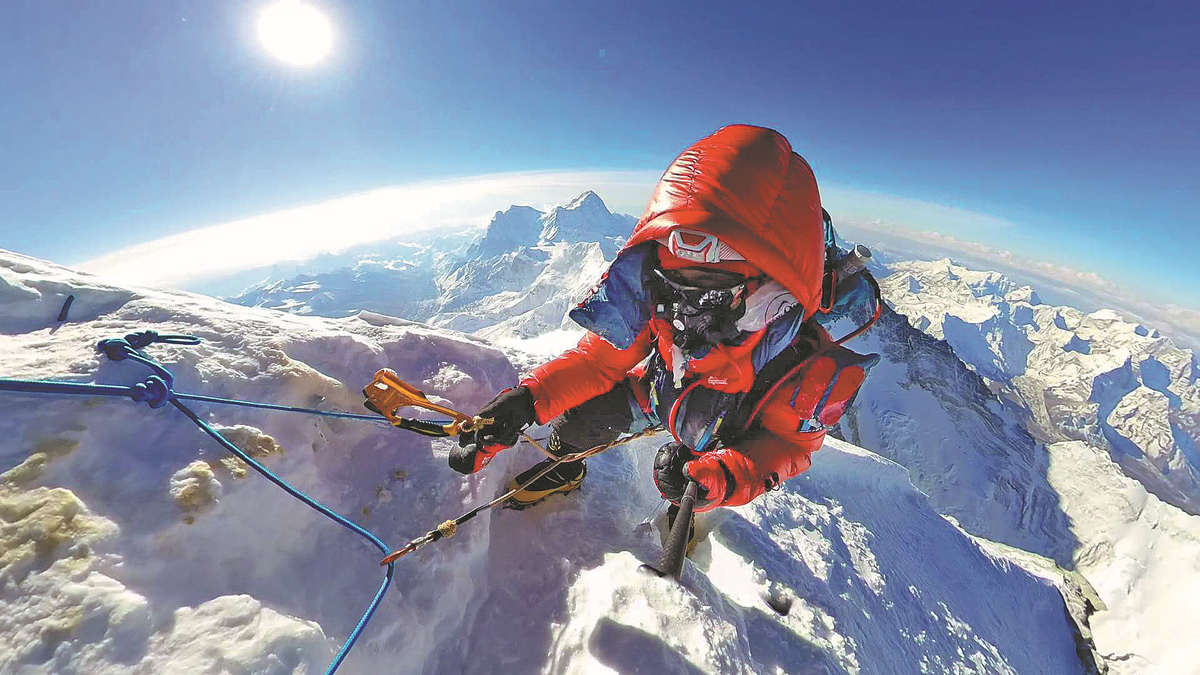First man with AS scales world's highest mountain
By TAN YINGZI in Chongqing | China Daily | Updated: 2023-06-22 08:02

Chongqing native with incurable disease achieves dreams through perseverance
At age 13, Wang Minglong was diagnosed with ankylosing spondylitis (AS) — a type of arthritis that causes inflammation in the joints and ligaments of the spine — and was told that he might spend the rest of his life in a wheelchair.
Some two decades later, with 18 titanium-alloy pins in his body and an inflexible spine, the 34-year-old became the first person in the world with the disease to scale the world's tallest peak Mount Qomolangma, known as Mount Everest in the West.
After years of preparations, on May 18, he finally stood on the top of the world, demonstrating the power of passion, courage and perseverance.
"The disease and pain can only make me love the world a lot more," he said. "I want to spread the passion for life to more people around me."
Wang, at just shy of 1.6 meters tall, weighed less than 50 kilograms when he returned home from the arduous climb, having lost 12 kg during the journey.
As his inflexible spine severely limits his head and upper body movements, it took him much longer during the ascent and descent, and his journey was more dangerous than for other climbers.
"I was so close to death at least three times, I thought I might die up there (on the mountain)," he said.
At least 12 climbers have died and five are missing and feared dead on Qomolangma during this year's main climbing season that just ended, the deadliest period since an earthquake triggered an avalanche that killed 18 people in 2015, according to Reuters.
Because of a series of incidents during Wang's team's final ascent, Wang found himself alone without a Sherpa guide. He had only one bottle of oxygen left, despite needing three to complete the journey more safely.
According to Nepal's regulations, each climber needs to hire at least one Sherpa guide.
"Under such circumstances, most people would have chosen to quit and return, but not me," Wang said.
He adjusted the oxygen use to the lowest level which is far from adequate for climbing.
When he reached the peak, he managed to take a photo without his face gear as proof of his arrival at the top of the world.
"My brain seemed to stop functioning due to altitude sickness and I couldn't shoot any more photos or videos," he said. "My oxygen was running low, so I had no time to enjoy the view and all I thought was I needed to return to base camp safely."
Born into a farming family in Southwest China's Chongqing, Wang was always one of the shortest and skinniest kids in his class. At age 12, he felt severe pain in his back, wrist and hip. A year later, he was diagnosed with AS. Over time, it can cause vertebrae in the spine to fuse. This fusing makes the spine less flexible and can result in a hunched posture.
There is no cure for AS.
At that time, his hip joint had a serious lesion and the doctor said he might be paralyzed in half a year and would spend the rest of his life in a wheelchair.
























